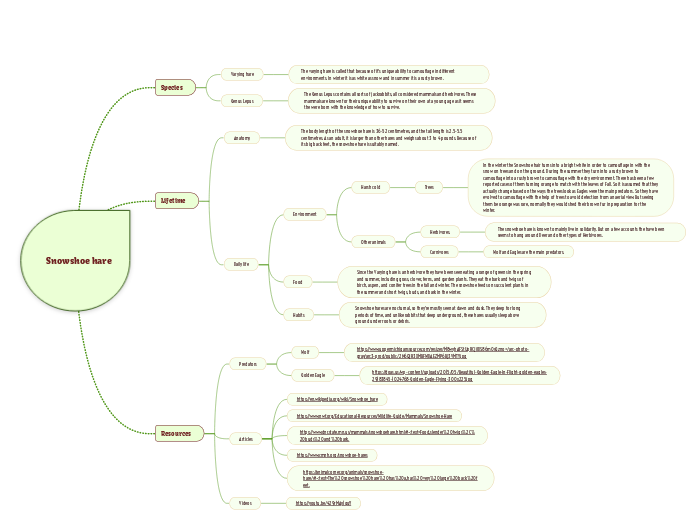av Erick Gutierrez-Pasillas 2 år siden
223
Snowshoe hare

av Erick Gutierrez-Pasillas 2 år siden
223

Mer som dette
https://doas.us/wp-content/uploads/2015/05/Beautiful-Golden-Eagle-In-Flight-golden-eagles-29183845-1024-768-Golden-Eagle-Flying-300x225.jpg
https://www.uppermichiganssource.com/resizer/M8wyhAFStUpRCJiIDS86m0sGzno=/arc-photo-gray/arc3-prod/public/2N6QJR3XMBFWDAEZMP6BJ3VMTY.jpg
Snowshoe hares are nocturnal, so they're mostly seen at dawn and dusk. They sleep for long periods of time, and unlike rabbits that sleep underground, these hares usually sleep above ground under roots or debris.
Since the Varying hare is an herbivore they have been seen eating a range of greens in the spring and summer, including grass, clover, ferns, and garden plants. They eat the bark and twigs of birch, aspen, and conifer trees in the fall and winter. The snowshoe feeds on succulent plants in the summer and short twigs, buds, and bark in the winter.
Other animals
Carnivores
Wolf and Eagles are the main predators.
Herbivores.
The snowshoe hare is known to mainly live in solidarity. But on a few accounts the have been seems to hang around Deer and other types of Herbivores.
Harsh cold
Trees
In the winter the Snowshoe hair turns into a bright white in order to camouflage in with the snow on trees and on the ground. During the summer they turn into a rusty brown to camouflage into a rusty brown to camouflage with the dry environment. There has been a few reported cases of them turning orange to match with the leaves of Fall. So it is assumed that they actually change based on the ways the trees look as Eagles were the main predators. So they have evolved to camouflage with the help of trees to avoid detection from an aerial view. But seeing them be orange was rare, normally they would shed their brown fur in preparation for the winter.